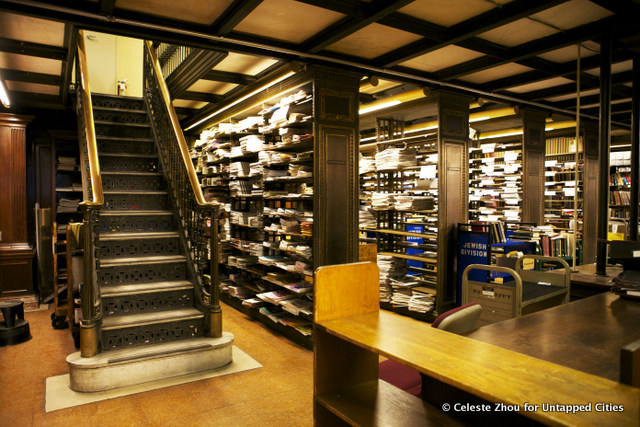
Libraries are places of wonder that inspire and satisfy the inquiries of curious minds, and there are very few libraries that do so better than the New York Public Library’s Stephen A. Schwarzman Building. Standing proudly between Fifth Avenue and Bryant Park, the New York Public Library‘s midtown branch, often referred to as the “main branch” of the city’s public library system, is an invaluable research resource, an architectural treasure, and a historic New York City institution.
The New York Public Library (NYPL) was founded in 1895 when already established library institutions created by John Jacob Astor and James Lenox were combined, along with a fund created by Samuel J. Tilden. These three components created a new free and public library system. The building that would house this new library was designed by the renowned architecture duo of Carrère and Hastings. The library was officially dedicated on May 23, 1911, sixteen years after the historic agreement between Lenox and Astor. Inscriptions on the facade of the building, above the main entrances, note the three founding institutions.
Now, more than 100 years later, the library continues to serve the intellectual needs of New Yorkers, expanding to 92 locations and four research centers systemwide. The original midtown library building, now considered the main branch of the system, is the second largest library in the nation, just behind the Library of Congress in Washington, D.C, and one of the largest in the world. Within its walls, the library holds not only millions of books and priceless artifacts but also many secrets waiting to be discovered.
1. The New York Public Library has 125 Miles of Book Stacks

If you’ve ever walked into the New York Public Library and wondered, “Where are all the books?” the answer lies beneath your feet. Around 4 million books are stored in subterranean stacks beneath the library building and Bryant Park. The library contains 125 miles of shelving both above and underground, including 88 miles spread throughout the seven stack floors of the Humanities and Social Science Library, and 37 miles in the two-level stack extension under Bryant Park called the Milstein Research Stacks. If you look around Bryant Park, you can spot a door in the ground that serves as an emergency exit for the underground stacks.
The self-supporting steel stacks serve as structural elements of the building. The stacks act as buttresses to the floor of Rose Main Reading Room which stretches the length of nearly two full city blocks. Snead & Company Iron Works of Jersey City, New Jersey were the contractors for the stacks which are made up, in part, of Carnegie steel. In addition to the sprawling stacks beneath the New York City site, there are also millions more books stored in an off-site facility in Princeton, New Jersey.





